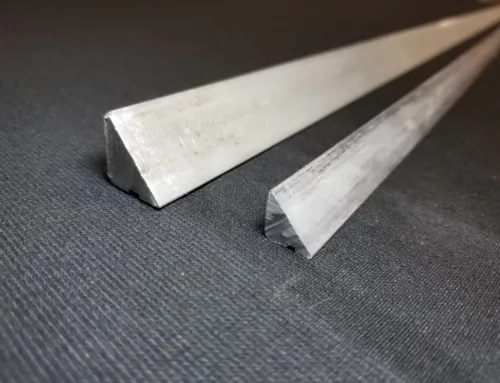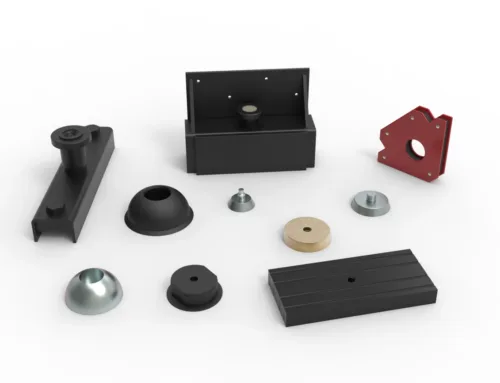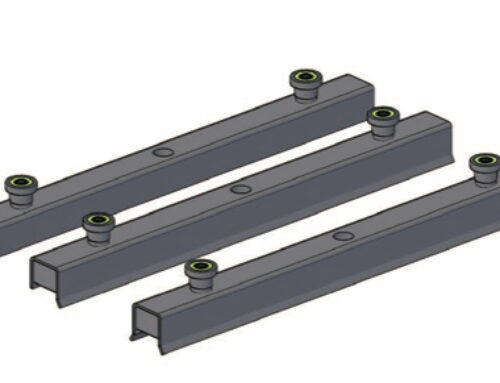If you’ve been following the rare earth magnet industry, you’ve probably heard about HRE-free NdFeB magnets — and why they’re shaking up the market.
These magnets deliver the incredible strength of neodymium-iron-boron without relying on costly and supply‑limited heavy rare earth elements like dysprosium or terbium. That means lower costs, better supply security, and a more sustainable manufacturing footprint — all without compromising on performance for many applications.
In this guide, you’ll discover exactly what HRE-free NdFeB magnets are, how they compare to traditional grades, and why they’re quickly becoming a go‑to choice for industries from EV motors to wind turbines. Let’s dive in.
What Are HRE Free NdFeB Magnets
HRE free NdFeB magnets are neodymium-iron-boron magnets made without heavy rare earth elements (HREs) like dysprosium (Dy) or terbium (Tb). In traditional high-performance NdFeB magnets, these elements are added to enhance heat resistance and maintain magnetic strength at elevated temperatures.
The key difference is:
- Traditional NdFeB magnets – Often contain Dy or Tb for high-temperature applications.
- HRE free NdFeB magnets – Use advanced processing and alloy design to achieve similar performance without heavy rare earth additions.
Why avoid Dy and Tb
- Scarce and costly – Global supply is limited and prices are volatile.
- Geopolitical risks – Mining and processing are concentrated in a few countries.
- Environmental impact – Extracting heavy rare earths has high ecological costs.
| Element | Role in Traditional NdFeB | Reason to Avoid |
|---|---|---|
| Dysprosium (Dy) | Improves coercivity and high-temp performance | High cost, scarce supply |
| Terbium (Tb) | Boosts thermal stability | Even rarer than Dy, costly |
Instead of relying on Dy or Tb, modern HRE free magnets leverage grain boundary engineering, nano-crystalline structures, and optimized alloy compositions to maintain performance while reducing dependency on critical heavy rare earths.
Why Move Towards HRE Free NdFeB Magnets
Heavy rare earth elements like dysprosium (Dy) and terbium (Tb) have always been expensive and limited in supply. Their prices can swing sharply due to market demand, trade restrictions, or mining challenges, making long-term cost planning harder for manufacturers. This price volatility pushes many U.S. companies to look for more stable alternatives.
Mining heavy rare earths also comes with environmental concerns and geopolitical risks. A large share of global production is concentrated in a few countries, leading to potential supply chain disruptions if political or trade conditions change. This uncertainty is a major issue for industries that rely on steady magnet sourcing, like electric vehicles, wind power, and electronics.
HRE free NdFeB magnets help reduce these risks. By removing Dy and Tb, manufacturers can keep costs more predictable and supply chains more resilient. They’re also a better fit for sustainability goals, lowering environmental impact while still delivering strong magnetic performance.
For U.S. companies, the shift towards heavy rare earth free magnets means:
- Lower exposure to international supply interruptions
- More predictable pricing structures
- Reduced environmental footprint
- Easier compliance with sustainability and domestic sourcing requirements
This transition isn’t just about cost savings—it’s about long-term reliability and supply security in industries where downtime is expensive.
Technical Challenges of HRE Free NdFeB Magnets
Heavy rare earth elements like dysprosium (Dy) and terbium (Tb) are normally added to NdFeB magnets to keep magnetic strength at higher temperatures and boost coercivity (resistance to demagnetization). Removing them cuts cost and supply risk, but it also makes it harder to hit the same high-temp performance levels.
Why Dy and Tb Matter
- Dy/Tb Role: Improve high-temp stability and coercivity.
- Without Them: Magnets may lose strength faster in heat, especially above 150°C.
Performance Impacts of HRE Free Designs
- Lower max operating temps compared to HRE grades.
- May require better cooling or design changes in motors.
- Slight drop in coercivity if no other improvements are made.
Technology Advancements Making It Possible
Manufacturers now use methods to recover lost performance without Dy/Tb:
- Grain boundary engineering – controls microstructure for higher coercivity.
- Advanced alloying – tweaks base composition for better thermal behavior.
- Protective coatings – improve corrosion resistance and stability over time.
NBAEM R&D Focus
NBAEM has developed HRE free NdFeB solutions that close the gap with Dy/Tb magnets by:
- Proprietary alloy blends for higher intrinsic coercivity
- Nano-scale grain boundary diffusion technology
- High-performance coatings for harsh environments
- Consistent testing for US industrial standards
| Property | Traditional NdFeB with Dy/Tb | HRE Free NdFeB (NBAEM Advanced) |
|---|---|---|
| Coercivity | Very High | High to Very High |
| Max Working Temp | 150–200°C | 120–180°C |
| Corrosion Resistance | Good | Good to Excellent |
| Cost Stability | Low | High |
| Supply Risk | High | Low |
Performance Comparison HRE Free vs Traditional NdFeB Magnets
When comparing HRE free NdFeB magnets to traditional grades containing dysprosium (Dy) or terbium (Tb), the main differences show up in strength, heat tolerance, and long-term durability. Here’s a quick breakdown:
Magnetic Properties
- Coercivity (HcJ): Traditional magnets with heavy rare earths usually have higher coercivity, especially at elevated temperatures. New HRE free designs now close much of this gap using grain boundary engineering and advanced alloying.
- Remanence (Br): Both types can offer similar remanence, meaning the retained magnetism at zero external field is comparable.
- Maximum Energy Product (BHmax): Very close between the two, especially at room temperature.
Thermal Stability
- Operating Temp Range: Heavy rare earths improve stability above 150°C, so traditional magnets still perform better in extreme heat. However, advanced HRE free grades now handle 120–150°C ranges with minimal performance loss, meeting EV and wind turbine needs in many cases.
Durability and Corrosion Resistance
- Corrosion Protection: Similar when protective coatings are applied. NBAEM uses multi-layer coatings to match or exceed conventional durability.
Typical Parameter Comparison
| Property | HRE Free NdFeB Magnets | Traditional NdFeB with Dy/Tb |
|---|---|---|
| Coercivity (HcJ @ RT) | High | Very High |
| Remanence (Br) | High | High |
| Max Energy Product (BHmax) | 35–45 MGOe | 35–48 MGOe |
| Max Operating Temp | 120–150°C | 150–200°C |
| Corrosion Resistance | High with coating | High with coating |
| Cost Stability | Higher | Lower due to HRE price swings |
This performance profile shows why heavy rare earth free magnets have become a strong choice for U.S. manufacturers looking for cost stability without sacrificing much in performance.
Applications of HRE Free NdFeB Magnets
HRE free NdFeB magnets are finding real traction in industries across the U.S. because they deliver strong performance without relying on costly heavy rare earth elements like dysprosium or terbium. Here’s where they shine:
Electric Vehicles Motors and Generators
These magnets offer high power density and help EV motors stay compact and efficient. Engineers use them to cut down on weight while keeping torque output strong — a must for range and acceleration.
Wind Turbine Generators
In wind power, reliability is everything. HRE free magnets keep performance stable while reducing dependence on volatile heavy rare earth supplies, making them ideal for both onshore and offshore turbines.
Consumer Electronics
From speakers and headphones to drones and gaming devices, compact high‑performance magnets make electronics lighter, more powerful, and more energy efficient.
Medical Devices and Precision Instruments
They’re used in MRI machines, surgical tools, and laboratory equipment where precision magnetic control and reliability are key, and where stable supply is critical for healthcare operations.
Other Emerging Sectors
Robotics, industrial automation, and aerospace are quickly adopting heavy rare earth free magnets to manage long‑term costs, ensure consistent availability, and meet stricter sustainability standards.
NBAEM Product Offering in HRE Free NdFeB Magnets
At NBAEM, we’ve built a full range of HRE free NdFeB magnets designed for customers who want high performance without relying on heavy rare earth elements like dysprosium (Dy) or terbium (Tb). Moreover, the export procedures for heavy rare earth–free products are more friendly and convenient, saving you even more time.Our lineup covers multiple grades, shapes, and coatings to fit everything from high-efficiency motors to compact consumer electronics. If you need a custom size, magnetic strength, or coating type, we provide tailored manufacturing to meet exact project specs.
Product Range and Customization
- Standard high coercivity, heavy rare earth free grades for industrial and commercial use
- Shapes: blocks, discs, rings, segments, and custom forms
- Coatings: Ni-Cu-Ni, epoxy, zinc, or Parylene depending on corrosion and wear resistance needs
- Magnetic performance options to suit low to high temperature applications
Quality and Testing
Every magnet goes through strict quality control and performance testing in line with international standards. We use advanced measurement tools to ensure:
- Accurate dimensions and tolerances
- Consistent magnetic strength
- Reliable temperature resistance
- Long-term durability in real-world operating conditions
Proven Results
Our HRE free NdFeB magnets are already running in electric vehicle drive motors, wind turbines, and robotics equipment across the U.S. market. Customers have reported:
- Stable supply and no delays despite global rare earth shortages
- Lower material costs compared to Dy/Tb grades while maintaining required performance
- Positive results in long-term salt spray and humidity tests
Supply and Support
We maintain large production capacity and inventory buffers to secure supply reliability, with export experience to the U.S. ensuring smooth customs clearance. Our technical team supports product selection, engineering fit, and performance verification before and after delivery.
How to Get Samples or Advice
- Contact our sales team with your specs and drawings
- Receive a technical recommendation and quotation
- Request free or discounted samples for testing
- Get engineering support for design optimization
If you’re looking for a stable, cost-effective alternative to traditional NdFeB magnets with heavy rare earths, our heavy rare earth free magnet solutions are built to deliver without compromise.
Future Trends and Industry Outlook
Research and development in rare earth magnet materials is moving fast, especially when it comes to cutting down or completely removing heavy rare earth elements like dysprosium (Dy) and terbium (Tb). The big push is to keep high coercivity and temperature stability without the supply risks and high costs tied to these elements.
In the coming years, we can expect:
- Better material engineering – New alloy blends, fine grain control, and advanced coating methods to push performance without HREs.
- Higher energy efficiency – Stronger magnets that run cooler and work in harsher conditions, expanding where they can be used.
- More recycling integration – Recovering neodymium from used magnets to lower raw material demand.
- Wider adoption in EV and wind power – Driven by U.S. clean energy incentives and growing electrification.
Market demand for heavy rare earth free NdFeB magnets is set to grow rapidly in the U.S. over the next decade. EV makers, renewable energy companies, and electronics manufacturers are all looking for supply chain stability and cost control, which fits perfectly with HRE free magnets.
NBAEM is investing heavily in this shift. Our team is working with global partners to scale production, improve grain boundary engineering, and bring down costs so customers in the U.S. can rely on a steady and sustainable supply. We see HRE reduced and HRE free solutions becoming the norm rather than the niche in the magnet industry.
FAQs about HRE Free NdFeB Magnets
What does HRE free mean exactly
HRE free means the magnet is made without heavy rare earth elements like dysprosium (Dy) or terbium (Tb). These elements are usually added to boost heat resistance, but they’re expensive and have supply risks. Instead, HRE free versions use other design methods to get strong performance without the heavy rare earths.
How do these magnets perform at high temperatures
Traditional Dy or Tb magnets handle heat well. HRE free NdFeB magnets now reach similar stability for many uses thanks to advanced alloying and manufacturing techniques. In most motor, EV, or industrial applications below 150°C, performance differences are minimal. For extreme heat, we can recommend specific enhanced grades.
Are HRE free magnets more affordable
Yes. With no Dy or Tb, the cost is less affected by rare earth price spikes. That means steadier pricing over time, making them more budget-friendly for large-scale production like EV drives or generator systems.
Can these magnets be recycled
Yes. HRE free NdFeB magnets can be recycled just like standard NdFeB materials. They can be processed to recover neodymium and other elements for reuse, supporting greener manufacturing.
Delivery timelines and MOQ from NBAEM
NBAEM offers flexible minimum order quantities (MOQ) depending on the magnet grade and size. Standard grades are often ready for shipment in 2–4 weeks. For custom designs or special coatings, lead times may extend slightly. Samples are available on request for testing before full production orders.





Leave A Comment